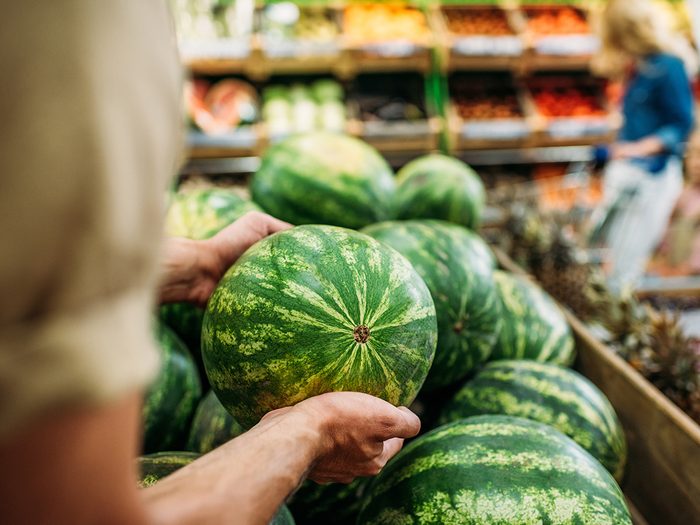
The trick to picking a ripe watermelon
Ripe watermelons have firm red flesh and brown seeds. When buying watermelons, test them for ripeness by tapping the melon and listening carefully. If it sounds firm and echoes, it is ripe. If it sounds dull, it has been picked for some time or is unripe.
Melons such as muskmelons and cantaloupes should smell aromatic without any hint of acetone. They should have no soft spots or cracks and certainly no mould formation. Ripe specimens yield slightly to pressure at the stems. They do not ripen further after harvesting and will only get softer. Store uncut melons at room temperature. Once cut, cover and refrigerate.
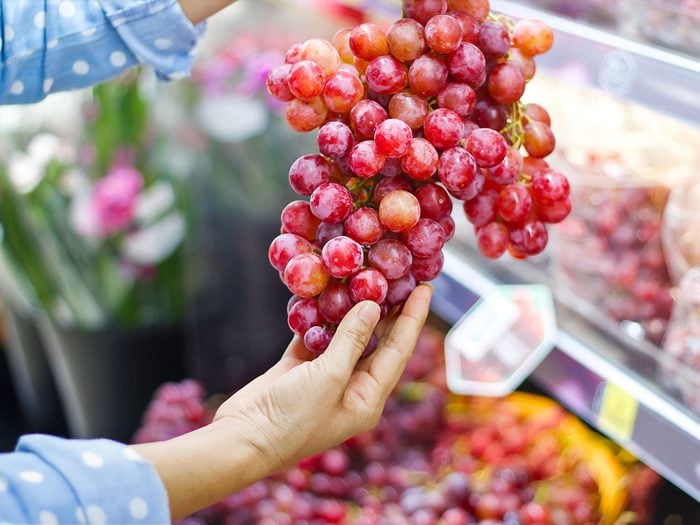
How to buy the best grapes
Classed as berries, most varieties of purple and green grapes grown for eating are sweet and juicy with a high glucose and fructose content. Select plump, well-coloured grapes, firmly attached to their stems. Avoid soft or wrinkled fruit and those browning around the stem. Grapes are generally picked when ripe and sweet, to be eaten fresh. Store grapes, unwashed, in the refrigerator in a sealed container or plastic bag.
Don’t miss our ultimate guide to healthy grocery shopping.
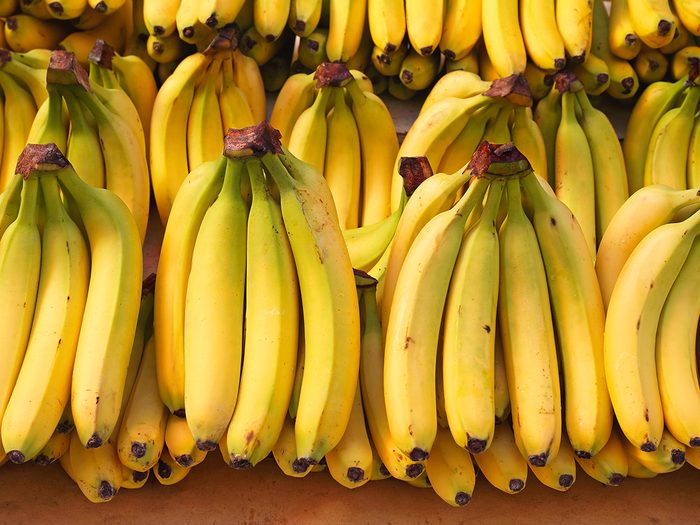
What to look for when buying bananas
Bananas continue to ripen after picking. When buying, select a range at different stages of ripeness so they won’t all ripen at once. Look for shiny yellow skins, either unblemished or with few brown spots. Bananas are high in vitamin C. They contain a mix of carbohydrates to provide sustained energy, and are a good source of dietary fibre, potassium and vitamin B6.
Check out these proven tricks to make your bananas last longer.
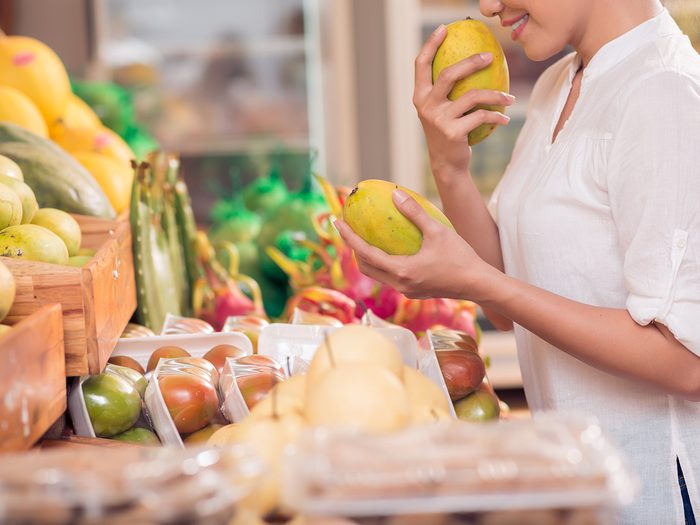
How to choose a good mango
The orange-coloured flesh of the mango is sweet, fragrant and succulent. Fibrous, but edible, strands, surround the very large seed. Select firm, bright mangoes that have a distinct pleasant aroma. Let ripen at room temperature. Store ripe fruit in the vegetable crisper or in a plastic bag in the refrigerator.
Make sure you never store these fresh foods together.
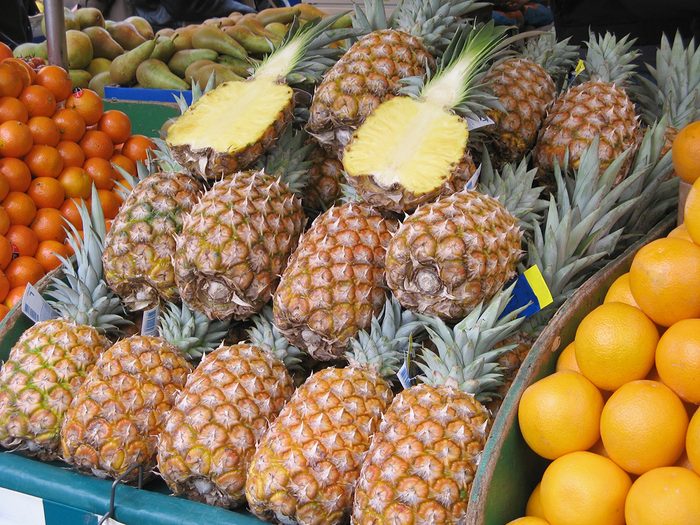
How to pick a pineapple
Select plump pineapples with a sweet, pleasant aroma and fresh-looking skin and leaves. Pineapples do not ripen further after picking. They become juicier, but not sweeter, once harvested. Store in a cool place. Once cut, cover and refrigerate.
These grocery store secrets from the produce section will change the way you shop.
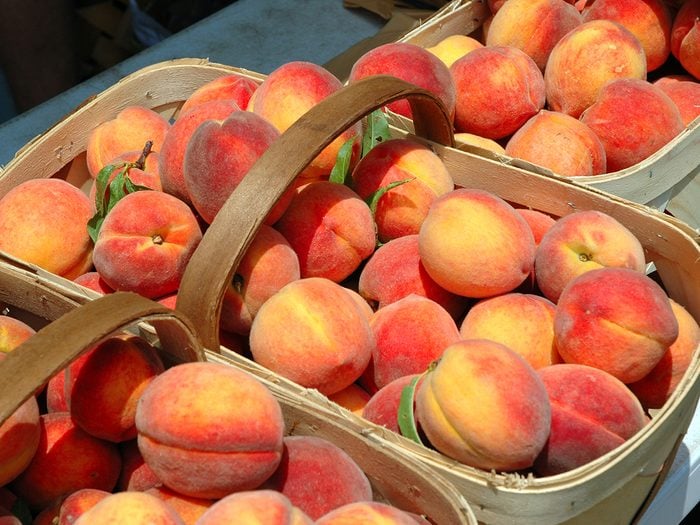
What to look for when buying plums and peaches
Fully ripe plums and peaches are juicy and sweet and the stones (pits) are easy to remove. Firm, less ripe plums and peaches are often tart and are just as suitable for salads or eating raw. The flesh of ripe peaches and plums yields to gentle pressure.
Now that you know how to pick the best fresh fruit, check out eight grocery apps that can save you money.